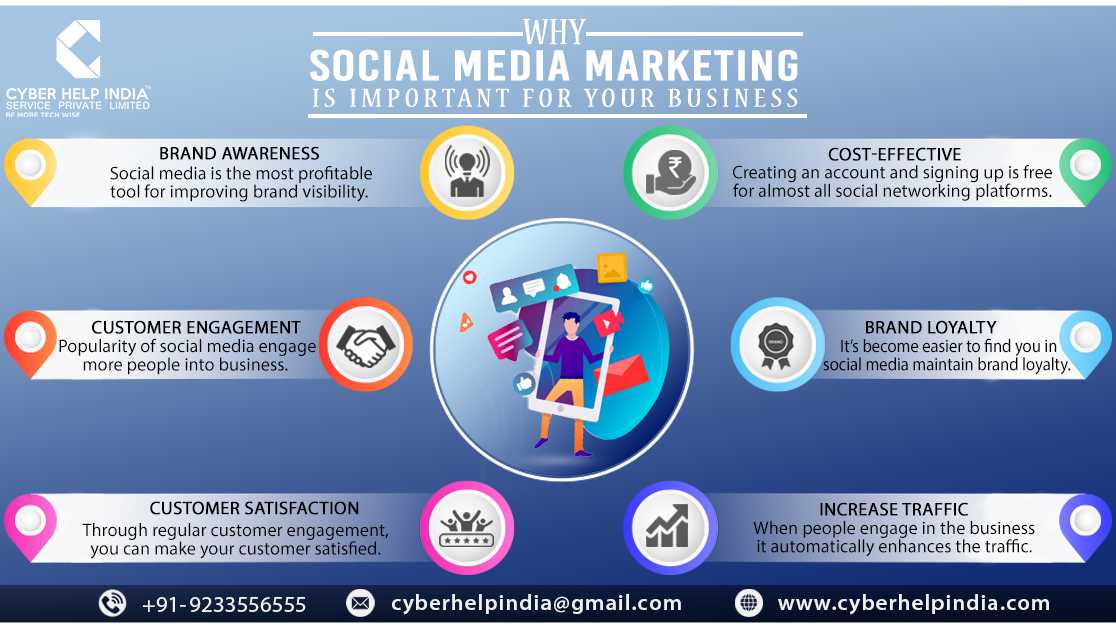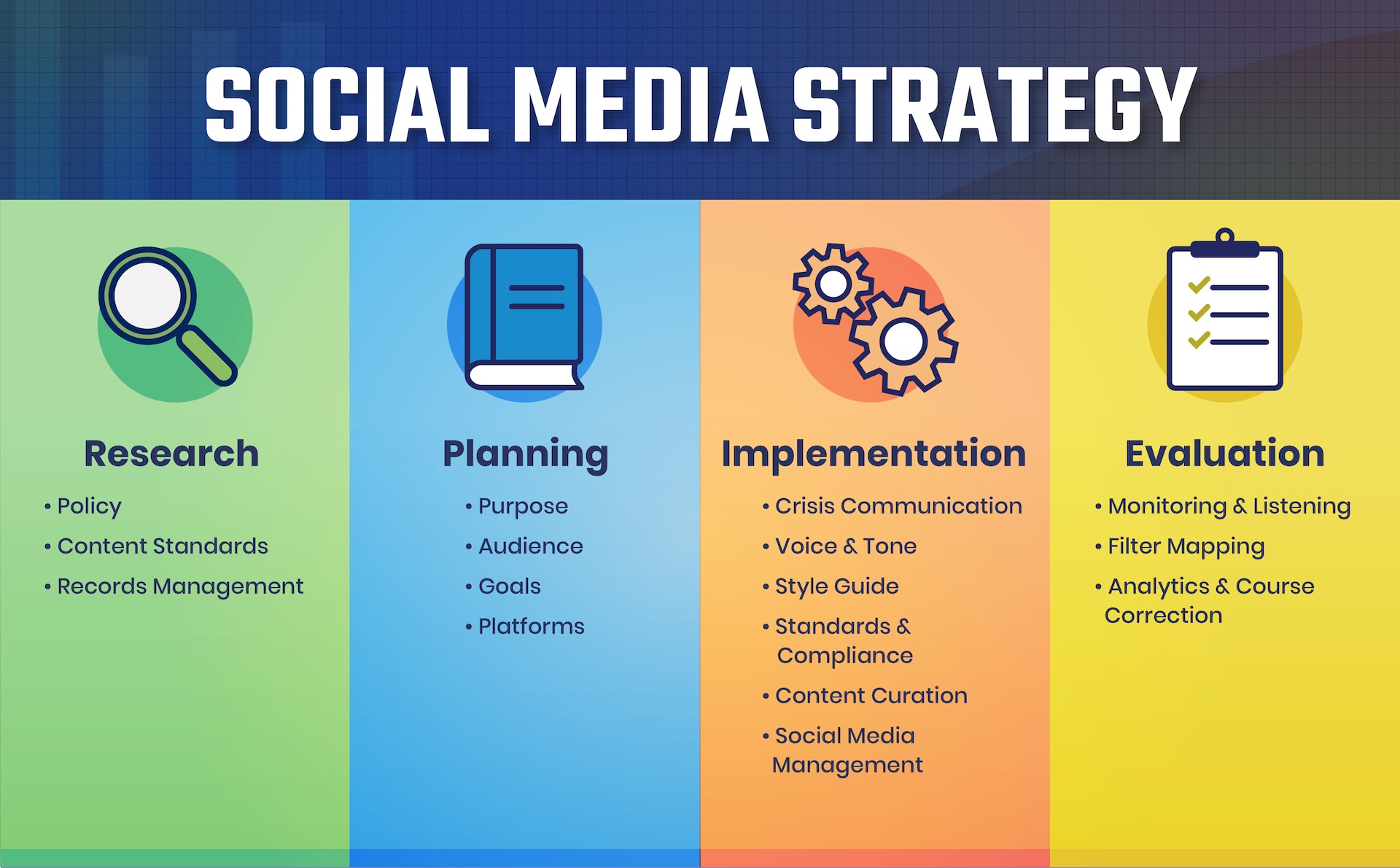In today’s digital era, social media marketing has become a central pillar in how businesses, brands, and organizations connect with their audiences. Platforms like Facebook, Instagram, Twitter, LinkedIn, TikTok, and others have evolved from simple networking sites into powerful marketing tools that shape consumer behavior, increase brand awareness, and drive conversions. Social media marketing encompasses a range of activities including content creation, community management, paid advertising, influencer partnerships, and analytics. Let’s dive into the key components of social media marketing, why it’s crucial, and how businesses can leverage it effectively.
1. What is Social Media Marketing?

Social media marketing is the use of social media platforms to promote a product, service, or brand, with the aim of connecting with an audience to achieve specific goals. These goals can range from raising awareness and building community engagement to driving traffic to a website or boosting sales. What makes social media marketing unique is its ability to facilitate two-way communication between brands and customers, creating a space where businesses can listen to and interact with their audience in real-time.
2. Why is Social Media Marketing Important?

There are several reasons why social media marketing has become essential for businesses of all sizes:
- Increased Reach: With billions of active users, social media platforms offer businesses access to a global audience. Platforms like Facebook and Instagram have built-in tools to help businesses reach specific demographics based on age, location, interests, and online behaviors.
- Cost-Effectiveness: Social media marketing can be highly cost-effective. Organic reach—where businesses engage audiences without paying for ads—is an affordable way to build a loyal following. Even with paid ads, social media advertising typically costs less than traditional advertising channels.
- Enhanced Customer Insights: Social media provides businesses with valuable insights into customer preferences and behaviors. Platforms track metrics like engagement, shares, and impressions, giving brands the ability to refine their strategies based on what resonates most with their audience.
- Brand Building: Social media enables brands to showcase their personality and values, fostering a sense of connection and loyalty with their audience. Consistent posting, engaging storytelling, and interacting directly with followers help establish a brand’s image and reputation.
- Boosted SEO: Though social media may not directly impact SEO, it can indirectly boost search engine rankings. Content shared on social platforms increases visibility and website traffic, which search engines view as indicators of authority and relevance.
3. Key Components of Social Media Marketing

- Content Creation: At the heart of social media marketing is content. Content can take many forms, from photos and videos to live streams, blog posts, and infographics. Quality content should be relevant to the audience, visually engaging, and aligned with the brand’s voice. Importantly, it should provide value—whether that’s through education, entertainment, or inspiration.
- Audience Engagement: Social media marketing isn’t just about posting; it’s about building relationships. Engaging with followers by responding to comments, asking questions, and even hosting live Q&A sessions helps businesses foster a sense of community and build trust.
- Social Media Advertising: Paid social media ads can amplify reach and engagement. Platforms offer a variety of ad formats, including photo ads, video ads, stories, and carousel ads, each tailored to maximize engagement based on the platform’s unique strengths. Paid ads also offer granular targeting, allowing businesses to reach highly specific segments of their audience.
- Influencer Marketing: Collaborating with influencers—individuals with large, engaged followings—has become an effective social media strategy. Influencers can provide brands with access to a wider or more targeted audience and lend credibility through association.
- Analytics and Reporting: Success in social media marketing hinges on understanding what works and what doesn’t. Social media analytics tools (such as Facebook Insights, Instagram Analytics, and third-party platforms like Hootsuite) track metrics like reach, engagement, follower growth, and conversion rates. These insights help marketers adjust strategies to improve performance over time.
4. Popular Social Media Platforms and Their Strengths

Each social media platform has unique features that make it suitable for certain types of content and audience segments:
- Facebook: Known for its extensive reach and robust ad targeting capabilities, Facebook is ideal for businesses looking to reach a broad audience. Its user demographics skew slightly older, making it effective for brands targeting an adult demographic.
- Instagram: With its focus on visuals, Instagram is popular among younger audiences and is perfect for brands that can leverage images and video to tell a story. Features like Stories and Reels allow for creative, short-form content.
- Twitter: This platform’s emphasis on real-time information and conversation makes it ideal for news, announcements, and quick interactions. Twitter is especially popular for customer service and industry thought leadership.
- LinkedIn: Primarily for professional networking, LinkedIn is ideal for B2B marketing. It’s effective for building thought leadership, sharing industry insights, and connecting with other professionals.
- TikTok: Known for its short, engaging video format, TikTok has exploded in popularity among younger users. It’s effective for brands targeting Gen Z and Millennials, particularly in industries like fashion, beauty, and entertainment.
5. Creating a Social Media Strategy

A successful social media marketing strategy includes several steps:
- Define Goals: Start by identifying what you want to achieve. Goals can include increasing brand awareness, driving website traffic, or generating sales.
- Know Your Audience: Understanding your audience’s demographics, interests, and behavior on social media will guide your content creation and engagement strategies.
- Choose the Right Platforms: Not all platforms are equal for every brand. Select platforms that align best with your audience and industry.
- Develop a Content Plan: Outline the types of content you’ll post, the themes you’ll cover, and the frequency of posts. Consider creating a content calendar to stay organized.
- Analyze and Adjust: Track key performance metrics to measure the effectiveness of your strategy and make adjustments based on your findings.
Conclusion
Social media marketing is a dynamic and powerful tool for any brand seeking to grow its presence and engage with customers. With a thoughtful approach, tailored content, and consistent engagement, businesses can harness the potential of social media to achieve significant results. It’s not just about promoting products but about building lasting connections that strengthen customer loyalty and ultimately drive growth.
